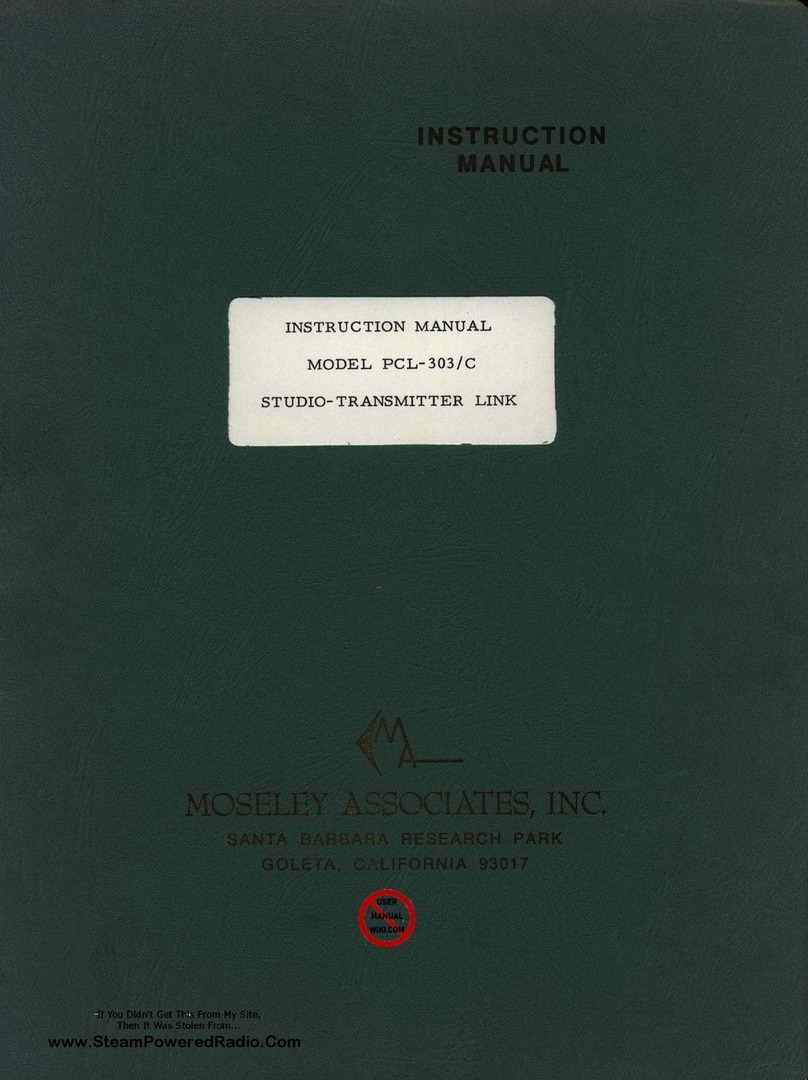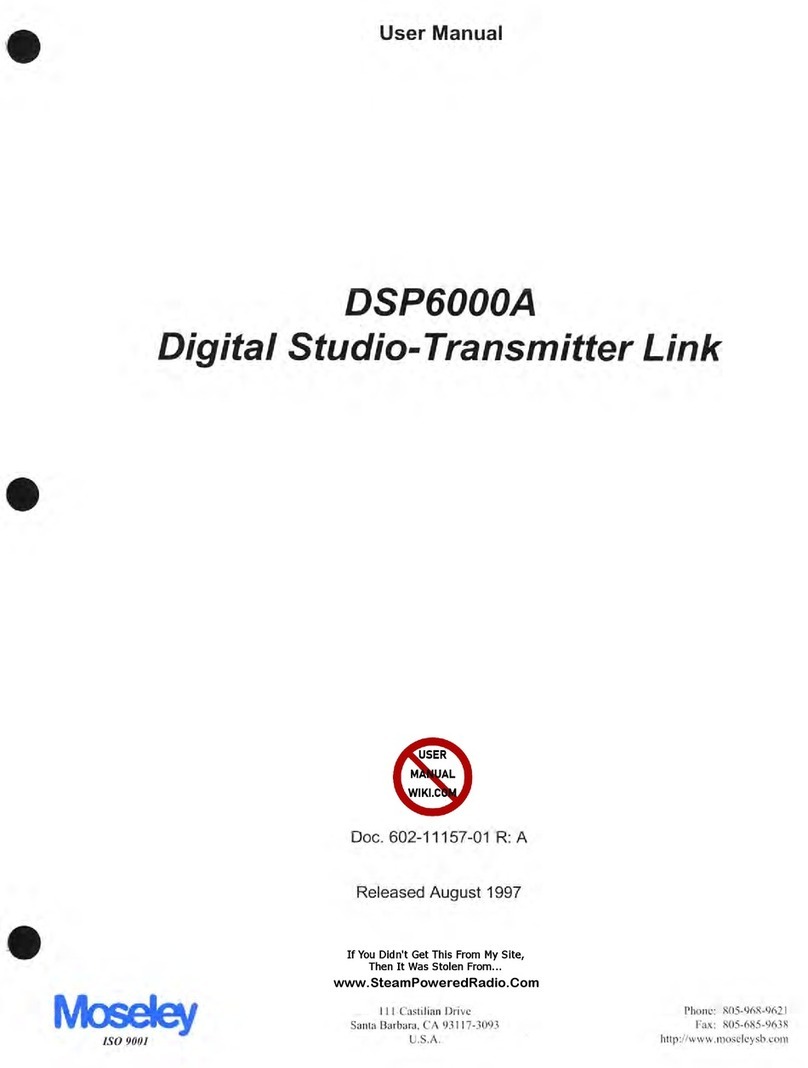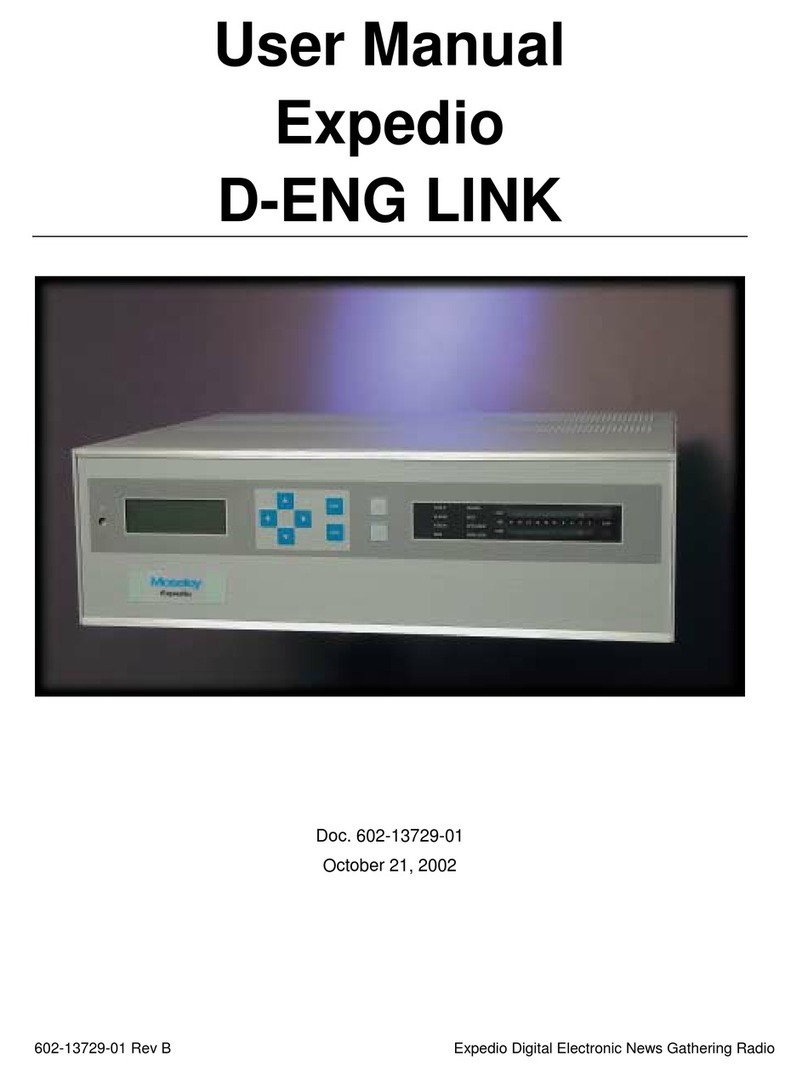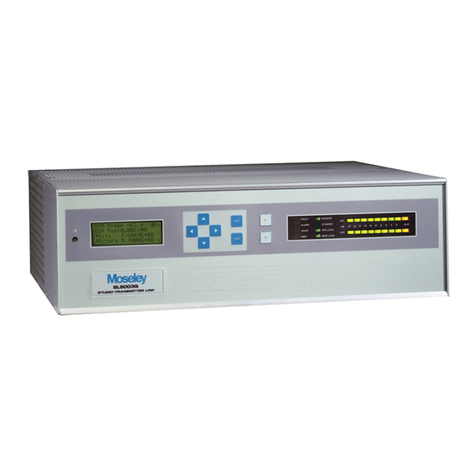
Moseley PCL6000
Moseley PCL 6000 Document No. 602-13375-01 Rev.B
4MODULE CHARACTERISTICS ...........................................................................................4-1
4.1 Introduction...................................................................................................................................4-1
4.2 Transmitter Theory of Operation................................................................................................4-1
4.2.1 Transmitter Audio/Power Supply............................................................................................4-1
4.2.2 Transmitter RF Module ...........................................................................................................4-3
4.2.3 RF Amplifier ...........................................................................................................................4-7
4.2.4 Channel Control Board (Multichannel Option).....................................................................4-10
4.3 Receiver Theory of Operation....................................................................................................4-12
4.3.1 Receiver Audio/Power Supply ..............................................................................................4-12
4.3.2 Receiver RF Module..............................................................................................................4-14
4.3.3 Preamp/1st Mixer (950 MHz, PCL6060) ..............................................................................4-17
4.3.4 IF Demod (PCL6020)............................................................................................................ 4-17
4.3.5 Double Converter/LO3 (PCL6030/6060).............................................................................. 4-18
4.3.6 FM Demod (PCL6030/6060).................................................................................................4-18
4.3.7 Adjacent Channel Filter (PCL6060)......................................................................................4-19
4.3.8 Channel Control Board (Multichannel Option).....................................................................4-20
5ALIGNMENT.........................................................................................................................5-1
5.1 Introduction...................................................................................................................................5-1
5.2 Test Equipment..............................................................................................................................5-1
5.3 Alignment Procedures...................................................................................................................5-3
5.3.1 STL Frequency Alignment......................................................................................................5-3
5.3.2 Receiver Sensitivity.................................................................................................................5-5
5.3.3 Receiver Selectivity.................................................................................................................5-7
5.3.4 Transmitter Deviation and Receiver Output Level Calibration............................................... 5-8
5.3.5 Ultimate Signal-to-Noise Ratio .............................................................................................5-13
5.3.6 Distortion Alignment.............................................................................................................5-14
5.3.7 Stereo Separation and Stereo Signal-to-Noise Ratio ............................................................. 5-17
5.3.8 Stereo Crosstalk.....................................................................................................................5-21
5.3.9 STL Frequency Change.........................................................................................................5-23
5.3.10 FMO Adjustment................................................................................................................... 5-32
5.3.11 Transmitter Troubleshooting Procedure................................................................................5-34
5.4 Module Adjustments Information..............................................................................................5-35
5.4.1 Transmitter Audio/Power Supply..........................................................................................5-35
5.4.2 Transmitter RF Module ......................................................................................................... 5-37
5.4.3 Doubler Assembly (1.7 GHz)................................................................................................5-38
5.4.4 RF Amplifier .........................................................................................................................5-38
5.4.5 Receiver Audio/Power Supply ..............................................................................................5-40
5.4.6 Receiver RF Module..............................................................................................................5-41
5.4.7 IF Demod (PCL6020)............................................................................................................ 5-42
5.4.8 Double Converter/LO3 (PCL6030/6060).............................................................................. 5-43
5.4.9 Preamp/1st Mixer (950 MHz, PCL6060) ..............................................................................5-43
5.4.10 FM Demod (PCL6030/6060).................................................................................................5-44
5.4.11 Adjacent Channel Filter (PCL6060)......................................................................................5-44
5.4.12 Channel Control Board (Multichannel Option).....................................................................5-44
5.5 Test Fixture Diagrams.................................................................................................................5-46
6CUSTOMER SERVICE.........................................................................................................6-1
6.1 Introduction...................................................................................................................................6-1
































